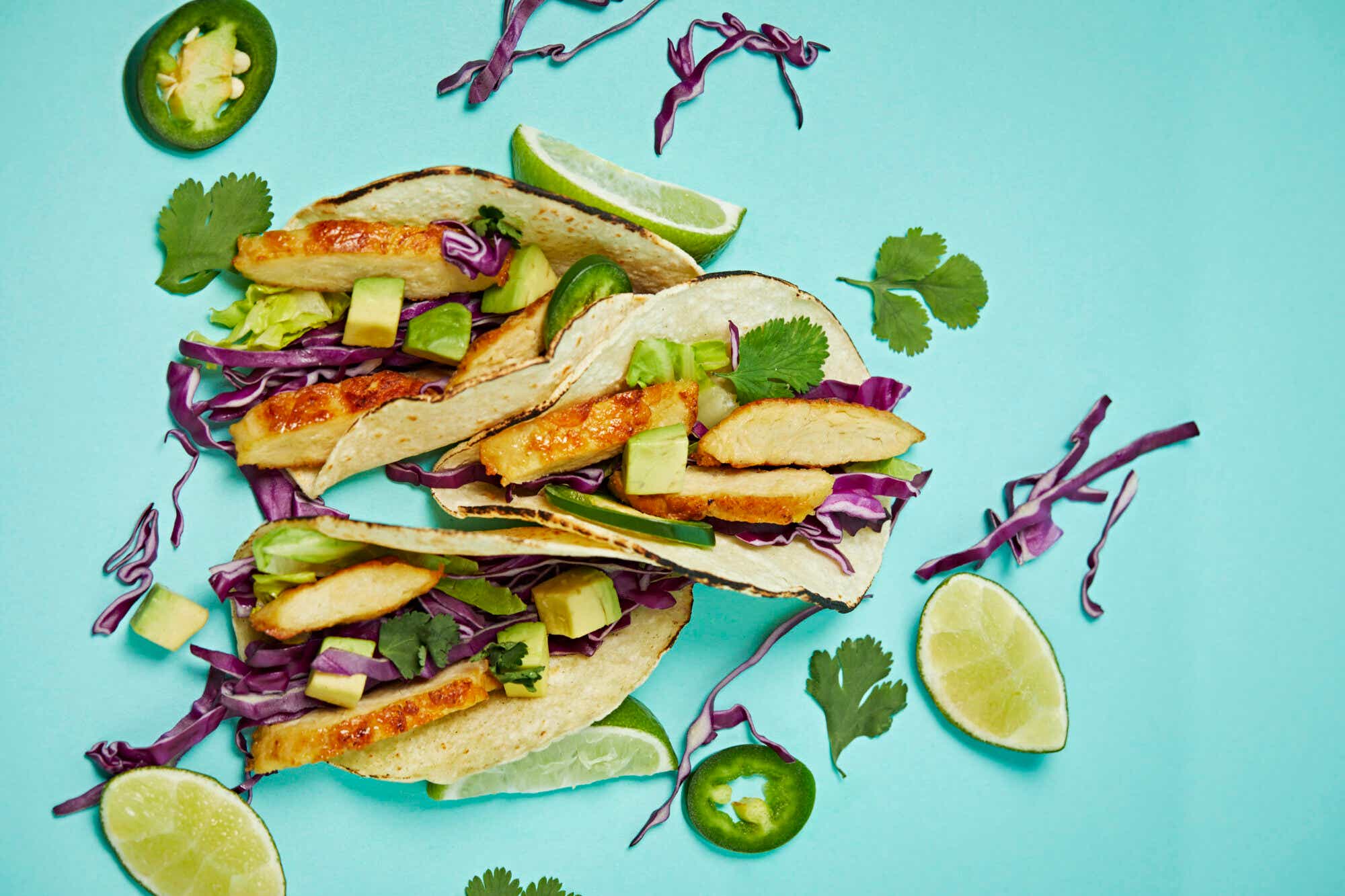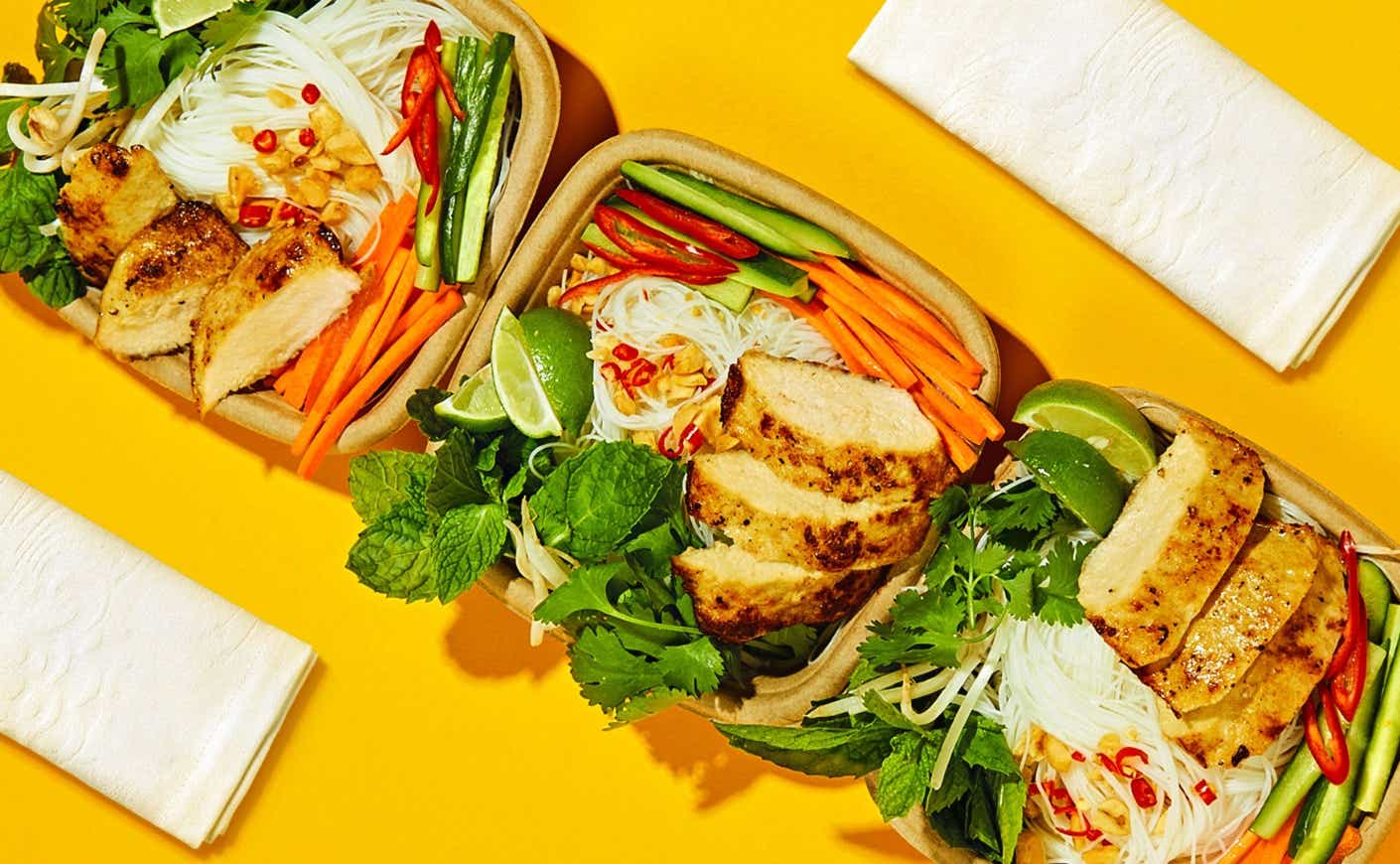Creator Uma Valeti calls it an “enormous milestone for humanity.”
Eating meat has been a common practice for pretty much as long as humans have existed. But as of 2022, it’s an increasingly controversial habit, one that calls into question issues ranging from animal rights to the toll on the environment. But what if our meat didn’t have to come from a slaughterhouse, factory farm, or even from animals at all? Though it might sound like something from a sci-fi film, an up-and-company food company has developed “cultivated” (aka lab-grown) meat, and the Food and Drug Administration has already given it a green light.
UPSIDE Foods, a San Francisco-based startup, produces meat that has been harvested from real animal cells, without killing any livestock. On top of being more humane, the process is also being hailed for also being more efficient and environmentally conscious.
Though it’s the first company to get such an approval, it likely won’t be the last — the FDA has already said that it’s ready to work with other firms to approve cultured animal-cell food. “There’s a lot more work to do going forward, but this is an enormous milestone for humanity,” UPSIDE Foods creator and founder Valeti tells Katie Couric Media.
But if you’re looking for a shrink-wrapped package of cultivated meat the next time you’re at the supermarket, you might be disappointed — it still needs additional approvals from regulators before it hits grocery store shelves.
Until then, there are plenty of questions surrounding its production and safety, so here’s what we know so far:
First, what is cultivated meat?
Cultivated meat, sometimes called lab-grown or clean meat, is real meat “grown” from animal cells (more on that below), so you won’t find it alongside popular plant-based meat alternatives like the Impossible Burger.
In truth, Valeti says the real target audience for the product is omnivores like himself who love meat, but struggle with the idea of slaughtering animals to get it. So far, the FDA has only approved the company’s chicken, but Valeti says his team has also produced beef, duck, and even some seafood, like lobster.
“Just showing the possibility of preserving choice and preserving life — that’s the thing that gets me most excited about it,” says Valeti.

How’s cultivated meat made?
By now, you’re probably imagining a team of scientists in white lab coats huddling around a Petri dish. But in reality, this alternate meat is created in a 70,000-square-foot facility outside San Francisco that Valeti says looks like any other food production facility or brewery. And yet it’s far from ordinary: A skilled crew of biologists, biochemists, nutritionists, and engineers turn UPSIDE’s concept into a product that’s ready to eat. Unlike the traditional method of raising and slaughtering cattle, meat is “grown” in a production facility by culturing animal cells.
After years of experimentation, UPSIDE’s process of making meat is generally broken down into a couple of tried-and-true steps: First, Valeti’s team extracts “high-quality” cells that they source from a young animal or egg via a needle biopsy. These are then separated based on their flavor and texture. Then they’re placed in a large stainless steel tank called a cultivator, where they’re injected with the necessary nutrients, including fats and amino acids, before becoming meat. The final step includes shaping the product into a shape customers would recognize, like a chicken breast. While it’s definitely an unconventional process, Valeti says one of the inherent advantages to this method is that UPSIDE’s “chicken” tends to be a lot more tender and juicy than the traditional meat it’s mimicking.
Valeti admits that there’s still some work to do when it comes to perfecting UPSIDE’s meats. For instance, he says his team still can’t fully replicate certain meat textures that come naturally from raising animals the old-fashioned way. This includes what’s known as marbling, a term used to describe the way intramuscular fat collects in various levels throughout a protein, giving it an appearance similar to marble. But he expects to be able to reach that milestone in the next few years.
What are some of the advantages of cultivated meat?
In addition to being kinder to animals, cultivated meat is also considered more sustainable, especially now that the global demand for meat is only going up. To put this into perspective, Valeti estimates that the demand will double by 2050, putting a strain on already dwindling global resources.
On the other hand, cultivated meat doesn’t require as much land or water. (It takes roughly 1,800 gallons of water to produce 1 pound of beef on average.) It could also reduce the number of toxic chemicals released by traditional beef production, including methane, carbon dioxide, and nitrous oxide. Overall, animal agriculture accounts for around 15 percent of global greenhouse gas emissions, according to a study published in the journal PLOS Climate.
“What if we take cells from cows and purely ask them to grow and become meat, and do that in two to four weeks?” says Valeti. “Suddenly, all the resources that go toward making meat are concentrated on making food.”

Is cultivated meat better for you?
Meat-rich diets have long been linked to a range of chronic diseases, ranging from heart disease to strokes and type two diabetes. But Valeti, a former cardiologist, says his cultivated chicken was created with nutrition in mind. Believe it or not, he first got the idea more than 15 years ago while growing human heart cells in a lab, a technique he later applied to the process of cultivating meat.
Cultured meat does have some health benefits over conventional meat: A major one is that it uses significantly fewer antibiotics than livestock farming. UPSIDE says their meats are only injected with small dosages of these infection-curing drugs when harvesting cells, but it doesn’t require additional amounts during full-scale production process as seen with the traditional method. Though there’s no clear-cut proof that they can hurt people directly, evidence shows they can potentially lead to antibiotic resistance, wherein drugs don’t work as well on infections as they once did.
There are also some advantages when it comes to food safety: Advocates like Valeti say cultivated meat is much less likely to be contaminated by E. coli bacteria and other diseases that you might find in a regular meat-processing plant.

When will lab-grown meat be available?
UPSIDE Food already cleared the FDA’s rigorous pre-market safety review for its cultivated chicken in November, meaning that the product’s just as safe to eat as conventional chicken. But there are still more regulatory hurdles to clear. Specifically, Valeti says the company’s working with the United States Department of Agriculture (USDA) to obtain a grant of inspection, which involves government inspectors coming in to check out the production facility and make sure that its product is being made in a clean, safe, and wholesome environment. After that, the only thing left to do is work with the USDA to create a label to explain the details of the product to shoppers, before it hits grocery-store shelves.
Though there’s no specific timeline yet, Valeti’s optimistic that the approvals will reassure consumers, saying the “bar is really high with cultivated meat.” Though the concept may be a turnoff for some, a study from the nonprofit Good Food Institute shows that 80 percent of U.S. consumers report they’re likely to try lab-grown meat.
Of course, some generations are more open than others to the idea: 49 percent of Gen Z and 45 percent of millennials are highly likely to try it, compared to 33 percent of Baby Boomers. Whether or not you sample this newfangled meat is obviously up to you, but federal officials agree that this high-tech creation offers a compelling look into the future of food.
“The U.S. Food and Drug Administration is committed to supporting innovation in the food supply,” FDA Commissioner Robert Califf and Director of the FDA’s Center for Food Safety and Applied Nutrition Susan Mayne said in a joint statement, announcing UPSIDE’s approval in November. “The world is experiencing a food revolution.”








